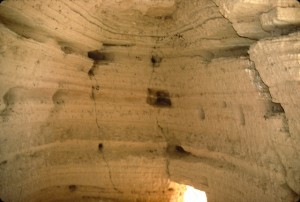How to Study a Dead Sea Scrolls Text: Introduction
The study of the Dead Sea Scrolls has become before our very eyes, in essentially the last generation, a field or perhaps sub-field of its own. This has both advantages and disadvantages. On the one hand, we have grown to expect certain competences from a Dead Sea Scrolls scholar. We expect him or her to be able to understand a set of codes, numbers and terms. More importantly we expect a high level of Hebrew, Aramaic and Greek knowledge, a wide understanding of issues in the fields of Hebrew Bible, ancient Judaism and early Christianity. We expect an ability to handle difficult text critical and editorial work, including palaeographic dating and analysis, calculating line lengths, reading fragmentary texts and reconstruction, let alone the exegesis of these materials. On the other hand, we have become an increasingly socially and academically recognizable group that welcomes with open arms all those who are prepared to pass the requirements of the novitiate, while often unintentionally keeping our rites secret. This is not for lack of an attempt to disseminate our teachings. Rather, like a modern Kabbalah, they are increasingly difficult for outsiders to understand as the field develops more depth and expects greater doses of technical knowledge. So, it is safe to say that we have greatly deepened our knowledge of the scrolls and their relevance to other related fields while not being as successful as we have wished in spreading that knowledge, in its detailed sense, to various areas of biblical studies, Hebrew Bible and New Testament, Judaic Studies, Religious studies, and history of Christianity. And this is despite the massive public interest that has responded so enthusiastically to our efforts at public education. Strangely, it is as if we have been more successful with the general public who comes to Dead Sea Scrolls exhibits and lecture series than with our academic colleagues.
Let us reflect on the skills and expectations we have, from the point of view of the classic disciplines of the university. But first, some general comments on the manner in which these disciplines are applied in various areas of Judaic Studies and the study of Christianity. If we look at these fields as they study the Middle Ages and the modern period, we have strict divisions of such disciplines as history, literature, thought/philosophy and the contributions of the social sciences, especially sociology and political science. Scholars are trained to do those general disciplines and to apply the methods they learn and the wider data of the field to their fields of study. Not so when we look at these fields regarding the period previous to the end of Late Antiquity, essentially before the Islamic conquest. Before that period scholars of the Hebrew Bible, New Testament, Second Temple, Late Antique Christianity and the Talmudic period are expected to command philology, history and literary methods and to bring them to bear on their work. But their colleagues in the Medieval and modern periods will be disciplinarily differentiated.
So the Dead Sea Scrolls field, like the other ancient humanities of Judaism and Christianity, and even like the fields of Classics and the study of the Ancient Near East, operate not in the later disciplinary sense, but rather in an unspoken interdisciplinary no-person’s land, in which one of our constant, essential and yet ineffable decisions is when to apply which method to which set of problems.
It is in this framework that we have to evaluate the question of what to expect of the scholar who seeks to be one of our colleagues. From the point of view of standard Humanities (and even Social Sciences) we expect aspects of philology, Religious Studies, History, Literature, and even Sociology to be part of the training and competence of this putative new Scrolls scholar. But strangely, none of this is at all explicit. We never teach this to our students. In fact, many of these terms are hardly mentioned, and sound like a list of what older scholars took in their college years if they have a US type BA, but at odds with the cultural-type requirements constituting the American general studies program of the twenty-first century.
Yet despite the pervasiveness of this set of disciplinary canons in the academy, our field works with a different axis of interdisciplinarity. This is really how I think we understand ourselves. We come to the Dead Sea Scrolls with earlier training and backgrounds in Hebrew Bible, with or without Ancient Near Eastern languages and related studies, New Testament, Rabbinics, and Patristics. Only our younger colleagues actually trained in Dead Sea Scrolls or Second Temple literature. But these are essentially subjects of study, not methods of reaching and research. For us, they constitute labels for programs of study that we have completed but they essentially place us outside the normal canons of academic discourse. Put otherwise, we barely speak the language of that debate. Like the Qumranites, we prefer to speak of ancient things, in an archaic dialect, employing methods thought by many of our colleagues in other departments to be greatly out of date. To put it starkly, we cannot explain our interdisciplinary character if we do not refer to, let alone see ourselves as practicing, any of the standard disciplines of the Humanities.


Dear Professor Lawrence h. schiffman,
thank you for this series of articles.
שולם,
daniel